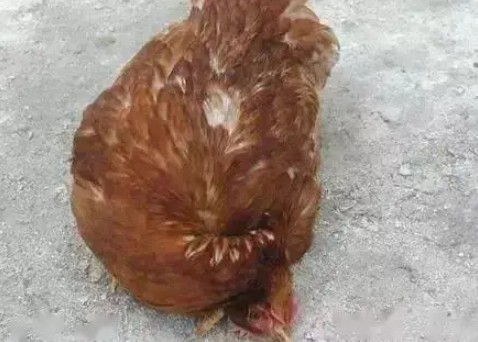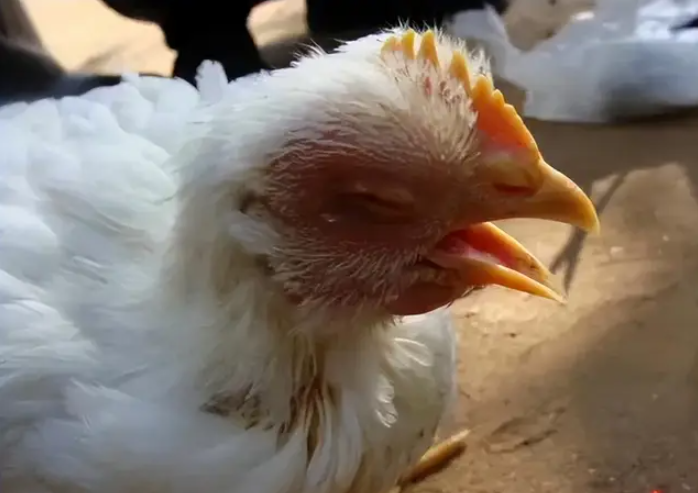------News Center
(1) Clinical symptoms
The incubation period is 3-5 days for natural infection and 2-5 days for artificial infection. 1. The initial body temperature of typical Newcastle disease is as high as 43-44℃. The sick chickens are depressed, their eyes are half-closed and they seem to be in a drowsy state. They eat less and drink more water. There is a large amount of sour and smelly liquid in their crop. They are unwilling to move and their crop droops. Their comb and meat are bluish-purple. They have difficulty breathing with a "snoring" sound. Green liquid flows out of their mouths and they excrete yellow-green feces. In the middle and late stages, sick chickens develop leg and wing paralysis, movement disorders, turning in circles, stargazing and other symptoms, accompanied by a drop in body temperature, and eventually fall into a coma and die. The egg rate dropped by 20%~70%, and the number of soft-shelled eggs, sandy-shelled eggs, faded eggs, white-shelled eggs, and small eggs increased significantly. The fertilization rate of breeder chickens decreased significantly. The commercial broiler flocks were mostly concentrated around 18 days and 30 days of age. They first had difficulty breathing and fever. Later, neurological symptoms appeared, and they eventually died of emaciation. 2. The initial stage of atypical Newcastle disease was similar to that of typical Newcastle disease. The chickens were frequently infected after vaccination, and the incidence and mortality were relatively low. The duration of death was long, and the clinical symptoms were mainly symptoms of the thigh, neurological symptoms, and decreased egg production rate. Other symptoms were not obvious. After the onset of the disease, the spirit and feed intake of the laying hen flock were basically normal, and some had diarrhea. After 5~74 days of onset, symptoms such as paralysis, twisted neck, stargazing, shaking head, and head nodding appeared. Generally, 7~10 days after the onset of the disease, the egg production rate decreased, the number of white-shelled eggs, deformed eggs, sandy-shelled eggs, and broken eggs increased, and the fertilization rate, hatching rate, and healthy chick rate of breeder chickens decreased. If the egg production is lower than the normal level, or the egg yolk membrane inflammation is caused by secondary infection of Escherichia coli, Salmonella and other diseases, the egg production is not easy to return to normal level. Chicks and young laying hens may have respiratory symptoms of varying degrees, such as shaking their heads, coughing, and light "snoring", and some may breathe with their mouths open.

1. High temperature and high humidity weaken prevention and control measures
Vaccine efficacy declines: High temperature (>30°C) accelerates vaccine inactivation, and the titer loss rate of freeze-dried live vaccines during transportation can reach 35%/48 hours (under non-cold chain conditions)
Disinfectant failure: When humidity is greater than 80%, the action time of aldehyde disinfectants is shortened by 50%, and organic residues further reduce the disinfection effect.
The virus can survive in feces: for 21 days at 30°C (compared to 14 days in temperate regions)
2. Cross-host transmission
Wild bird vectors surge: Tropical resident birds (such as starlings and pigeons) carry the VII.1.1 genotype virus, with a field detection rate as high as 18.7%
Polyculture is common: The incidence of disease in chicken-duck mixed farms is 3.2 times higher than that in single farms (Vietnam monitoring data)
VIBOV precision treatment plan:
Acute high fever: Qingwen Baidu powder (gypsum/rehmannia/coptis) 1-3g/piece, used for 5 consecutive days
Rehabilitation and conditioning: Drink Banqing Granules (Isatis Root + Isatis Leaf) with water to promote mucosal repair
Respiratory management: 0.2% ambroxol nebulizer to relieve spasms
Dehydration correction: Oral rehydration salt (NaCl 3.5g/L + KCl 1.5g/L)

